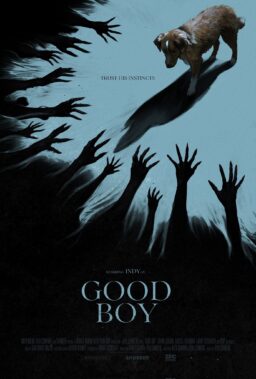At the press conference following this year’s Academy Awards, “12 Years a Slave” director Steve McQueen described a certain kind of progress made in 2013: “The background characters are now in the foreground.” The success of “Slave” capped a landmark year in which black cinema found success from the arthouse to the multiplex. Intimate dramas such as “12 Years a Slave,” “Fruitvale Station” and “Blue Caprice” earned critical acclaim, while movies with largely-black casts, including “The Best Man Holiday” and Kevin Hart’s solo concert film “Let Me Explain,” exceeded box office expectations. “Lee Daniels' The Butler” even managed to do both. There are various theories as to why these films all burst into movie theaters in the same year, but their cumulative impact could not be denied by the Academy or anyone else. David E. Talbert, who wrote and directed this year’s “Baggage Claim” (which earned $22 million on its $8.5 million budget), said that he would “liken [2013] to the Harlem Renaissance.”
But why should we stop there? Diversity is not just a black and white issue. Other races and ethnicities are still relegated to the background, both in cinema and in the American landscape as a whole. Alfonso Cuarón’s win for directing “Gravity” made him the first Latino honored in that category. Hearing him slip into Spanish during his acceptance speech must have been gratifying for aspiring Mexican-American filmmakers, but it should not obscure the fact that when it comes to the people and events depicted on the screen (as opposed to those behind the camera like Cuarón), Hollywood is actually regressing on Latino issues. Why not wish for a Spanish Harlem Renaissance as well?
The audience is certainly there: Latinos are the “heaviest moviegoers” of any demographic, according to the MPAA’s recent survey. As of 2012, African-Americans make up 12 percent of the population but only account for 11 percent of North American ticket sales. Hispanics make up 17 percent of the population but account for a whopping 26 percent of sales at the box office.

But they must be disappointed to see so few of them represented onscreen. Where are the Latino movie stars? Javier Bardem and Penelope Cruz may be Oscar-winning talents and well-known celebrities, but they are both of Spanish descent, not Latino. This places them in a different contemporary context. In particular, their presence is easier to swallow for that large, unfortunate swath of the American population that is uncomfortable with Latino culture’s influence on the mainstream.
There is a political theory for the lack of Latino movie stars: that Hollywood is afraid of offending the Tea Party demographic. Ten years ago, many Latino actors were either on a path to stardom or were already red-carpet darlings: Jennifer Lopez, Salma Hayek, Benicio Del Toro, for example. Lopez’s “Maid in Manhattan” grossed $94 million in 2002, the same year Hayek starred in (and was nominated for an Oscar for) “Frida“. Del Toro, meanwhile, won an Oscar for “Traffic” in 2000 and would earn another nomination for “21 Grams” in 2003.

It may not be a coincidence that, as Americans seem have become more divided over the issue of immigration in the post-9/11 era, Hollywood has grown wary of putting Latinos front and center. Look at where those stars are now: Lopez is largely absent from film, while Hayek has been reduced to playing Adam Sandler’s begrudging wife in the “Grown-Ups” franchise (she was terrific in 2012’s “Savages“, proving that her talent has not dried up). Del Toro is still working steadily but he has been largely absent from lead roles and the public eye since his 2010 flop, “The Wolfman” (although he has a couple interesting projects on the horizon, including Paul Thomas Anderson’s adaptation of Thomas Pynchon’s “Inherent Vice”).
Granted, there aren’t very many new movie stars of any race or ethnicity right now, at least not ones that can open a movie on star power alone. In a society that is so culturally and politically polarized, it is hard to find an actor that appeals to all factions. This could be why actors like Dwayne Johnson and Vin Diesel, who can pass for several ethnicities, are doing so well. Their “Fast and Furious” franchise is a rainbow of diversity.
Still, nothing is preventing the industry from catering directly to a demographic that already goes to the movies in large numbers. It seems that if Hollywood cares about their future (let alone the good PR that comes with appearing to care about diversity), they can’t continue to leave behind one of the fastest-growing minority communities in the country.
Of course, it’s not just a matter of plugging a Latino movie star into a generic story. What made 2013 such a great year for black cinema is that Hollywood produced stories about the black American experience. On the other hand, Cuarón’s win was certainly a landmark moment for the Latino community, but “Gravity” had no particular relevance to them. In fact, none of Cuarón’s films since his first feature, “Y Tu Mama Tambien“, have been set in Mexico, and other celebrated Mexican directors are following the same trajectory. Guillermo del Toro had made two films set in Spain but not one set in Mexico. Oscar nominee Alejandro Gonzalez Inarritu made his last film there in 2006 (“Babel“), but he went to Spain for 2010’s “Biutiful“, and his upcoming film, “Birdman”, is set in the U.S. and features an American cast, including Emma Stone and Zach Galifianakis.

Still, there are signs of progress. Last year, “Instructions Not Included” quietly became the highest-grossing Spanish language film in the U.S. The dramedy was written and directed by Mexican megastar Eugenio Derbez and produced by Pantelion, a joint venture between U.S. distributor Lionsgate and Grupo Televisa, a Mexican media powerhouse. They used an interesting distribution strategy: it was released on less than 1,000 screens and only in areas with heavy Hispanic populations. With a $39 million domestic gross, the strategy appears to have worked, but box office pundits and film critics, a demographic that remains largely white, seemed surprised by its success.
We could have an even bigger breakthrough on the horizon. On March 28, Mexican director (and sometimes actor) Diego Luna will release “Cesar Chavez”, a biopic of the Mexican-American farm workers union leader. The film stars the extremely talented Michael Peña (“Crash, End of Watch”), but more importantly, it tells a story that is relevant to the Latino community. Chavez was an American hero first (his portrait currently sits in the National Portrait Gallery), but he is rightly held in special esteem within the Latino community. His work drastically improved conditions and wages for farm workers, many of whom are Mexican-American, and his birthday is even a state holiday in the heavily-Latino states of California, Texas, and Colorado.
It seems, then, that a lot is riding on the success of “Cesar Chavez”. It won’t take too much for the film to earn a profit—its budget is a frugal $8 million—and that’s good. Hollywood executives will surely be closely watching the film’s grosses and the demographic breakdown to see if America is ready for a Latino story. If it is received well by critics and audiences, it could pave the way for a “year of Latino cinema” similar to what just happened in 2013 for black cinema. Sí, se puede.












